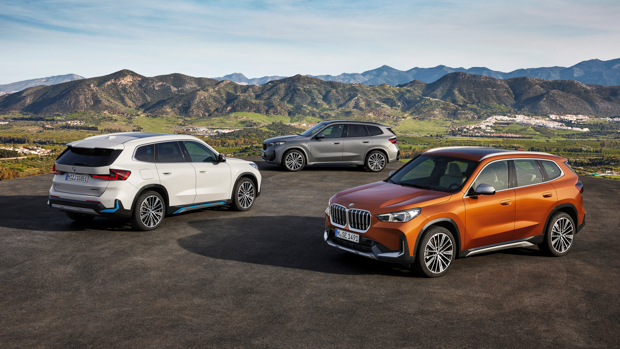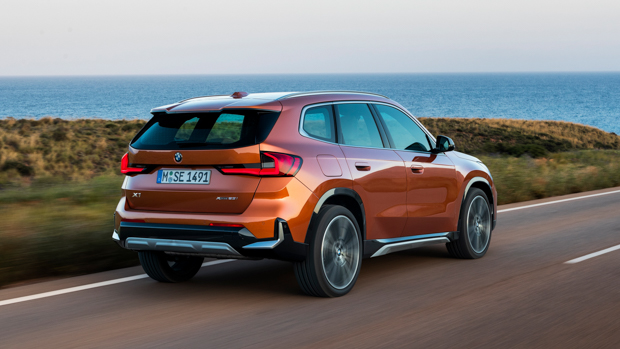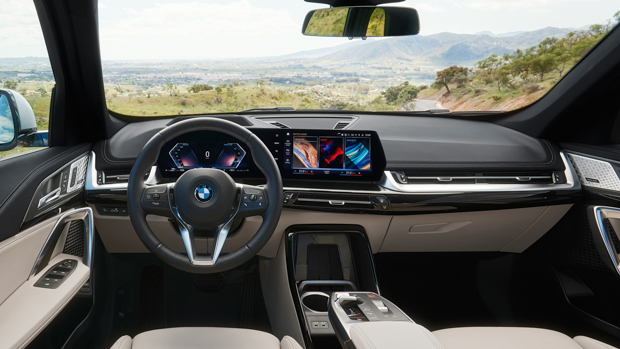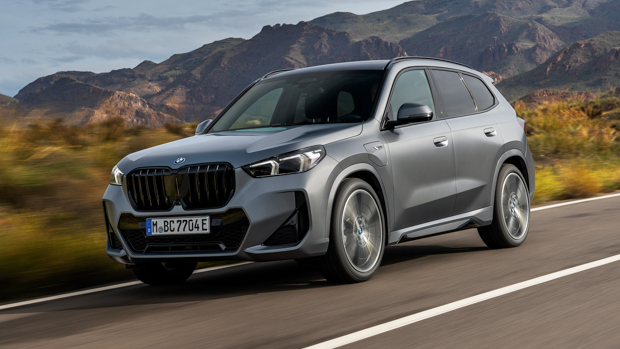-
Car Reviews
- All reviews
- Midsize SUVs
- Small cars
- Utes
- Small SUVs
- Large SUVs
- Large cars
- Sports SUVs
- Sports cars
- Vans
Latest reviews
- Car News
-
Car Comparisons
Latest comparisons
- Chasing Deals
The third-generation BMW X1 has become larger and smarter than before, as the premium small SUV segment grows ever more competitive
BMW has unveiled an all-new X1 small SUV line-up, complete with a re-designed and modernised interior and a fully-electric sister model known as the iX1.
The third-generation X1 offers a choice of diesel, plug-in hybrid, petrol, and now electric variants as part of BMW’s ‘power of choice’ philosophy, though only the latter pair have been confirmed for the Australian market.
Upon arrival, the X1 will face off against accomplished but older premium small SUVs such as the Mercedes-Benz GLA, Volvo XC40, Lexus UX and Audi Q2/Q3.
Readers searching for more information on the all-electric iX1 should refer to our separate article which dives into the full details.
BMW has evolved the appearance of the new-gen X1, choosing to forgo the oversized kidney grilles featured on models such as the X7, 4 Series and 7 Series, though the shape has been enlarged slightly and squared-off to fit in.
LED headlights and tail-lights are fitted as standard, with Matrix LED headlights available on higher trims, and wheel choices now stretch from 17-inches all the way up to 20-inches for the first time.
Like so often happens in a new-generation vehicle, the X1 has grown in all dimensions in order to free up space inside the cabin. The X1 now measures 4500mm (+53mm), 1845mm wide (+24mm), and a more substantial 1642mm tall (+44mm).
BMW engineers have also focused on improving the ride comfort and driving dynamics of the X1, which were seen as key weaknesses in the outgoing generation, by stretching the wheelbase 22mm to 2692mm.
The added length has seen the inside of the X1 expand accordingly, with the cabin said to be more specious in general. The luggage capacity has increased from 505 litres to 550, which can expand to up to 1600 litres when the 40/20/40 split-folding rear seats are down.
BMW has incorporated its latest generation OS 8 software and the curved split-screen display which pairs a 10.25-inch digital instrument cluster and a 10.7-inch touchscreen, with wireless Apple CarPlay and Android Auto built in. Notable, the iDrive rotary has been removed.
A Harmon-Kardon sound system will be offered on some models, along with other luxuries such as a panoramic sunroof and adaptive M suspension that can adjust the ride height by up to 15mm.
Designers have also raised the seating position of the X1 to allow drivers to peer further into the distance, with the front occupants now separated by a centre airbag in the event of an accident.
BMW Australia will introduce the third-generation X1 during the fourth quarter of this year, with the petrol-powered X1 sDrive18i and X1 xDrive20i grades confirmed to arrive at launch.
The X1 sDrive18i makes use of an updated 1.5-litre turbo-petrol three-cylinder engine making 115kW of power and 230Nm – reflecting an increase of 15kW and 10Nm respectively – with all grunt sent to the front wheels.
Opting for the X1 xDrive20i introduces a larger 150kW/300Nm 2.0-litre turbo-petrol four-cylinder – a 9kW/20Nm boost over the outgoing model – connected to an all-wheel-drive system.
Both variants feature a seven-speed dual-clutch automatic transmission.
BMW has not yet detailed the exact specification and pricing for the X1 range in Australia, but we expect this information will follow in the coming months.
Latest news
About Chasing cars
Chasing Cars reviews are 100% independent.
Because we are powered by Budget Direct Insurance, we don’t receive advertising or sales revenue from car manufacturers.
We’re truly independent – giving you Australia’s best car reviews.



